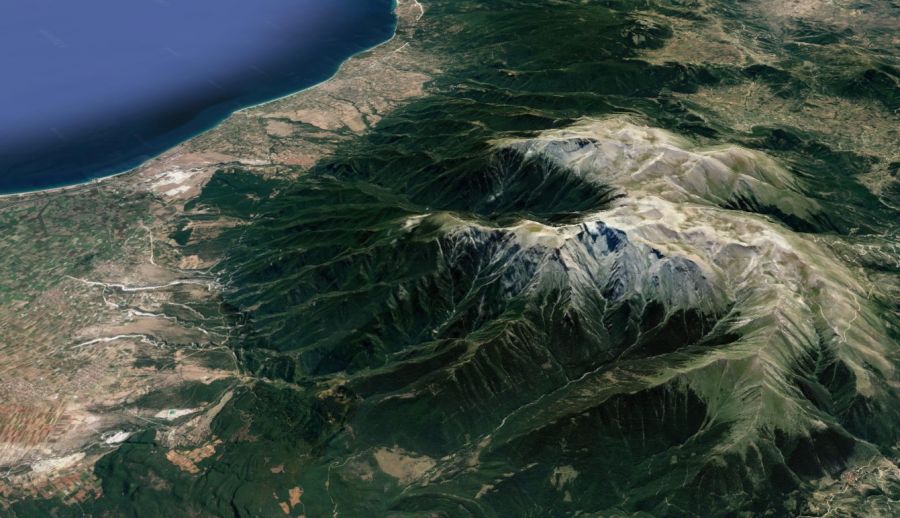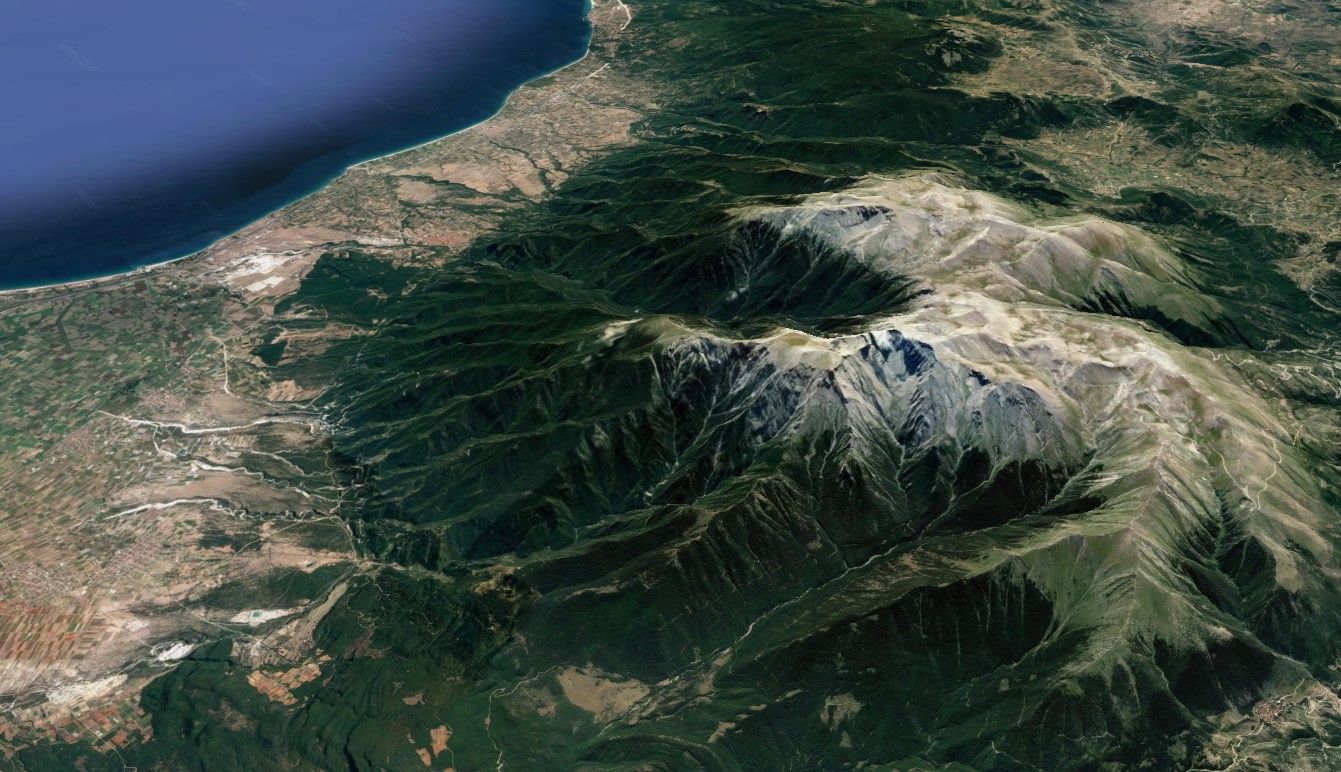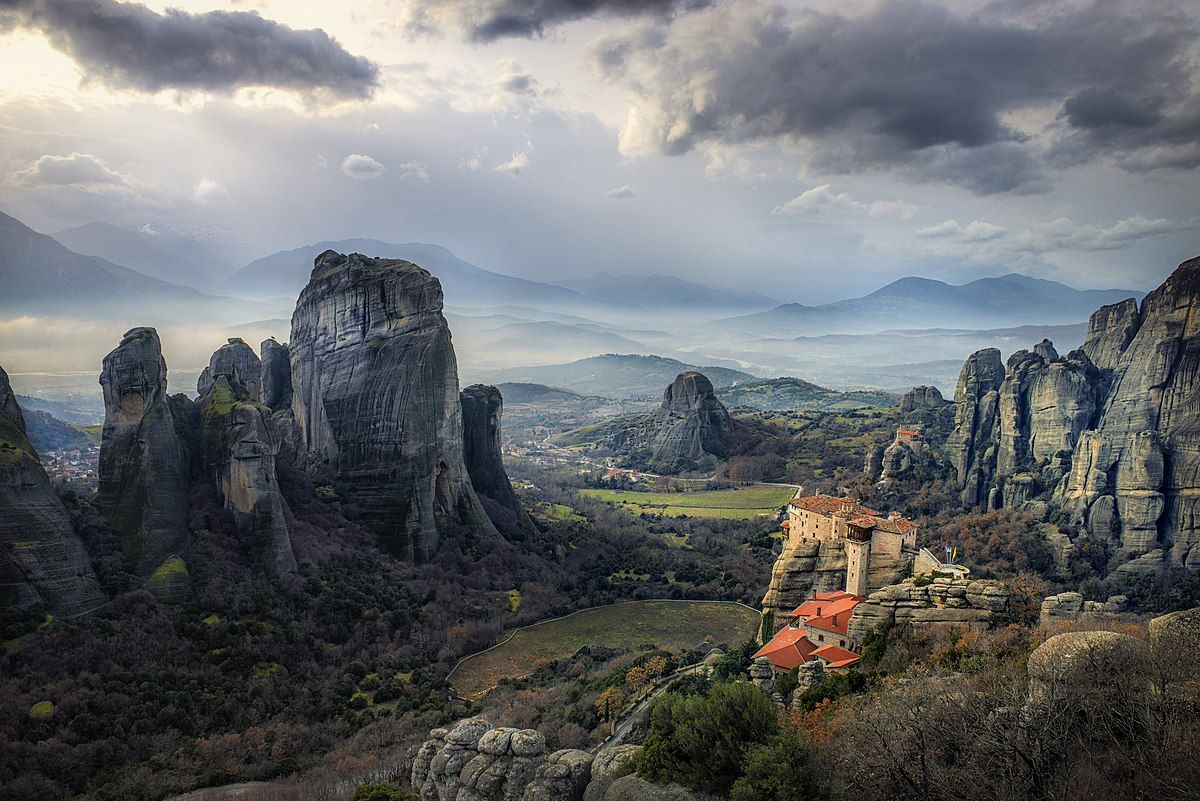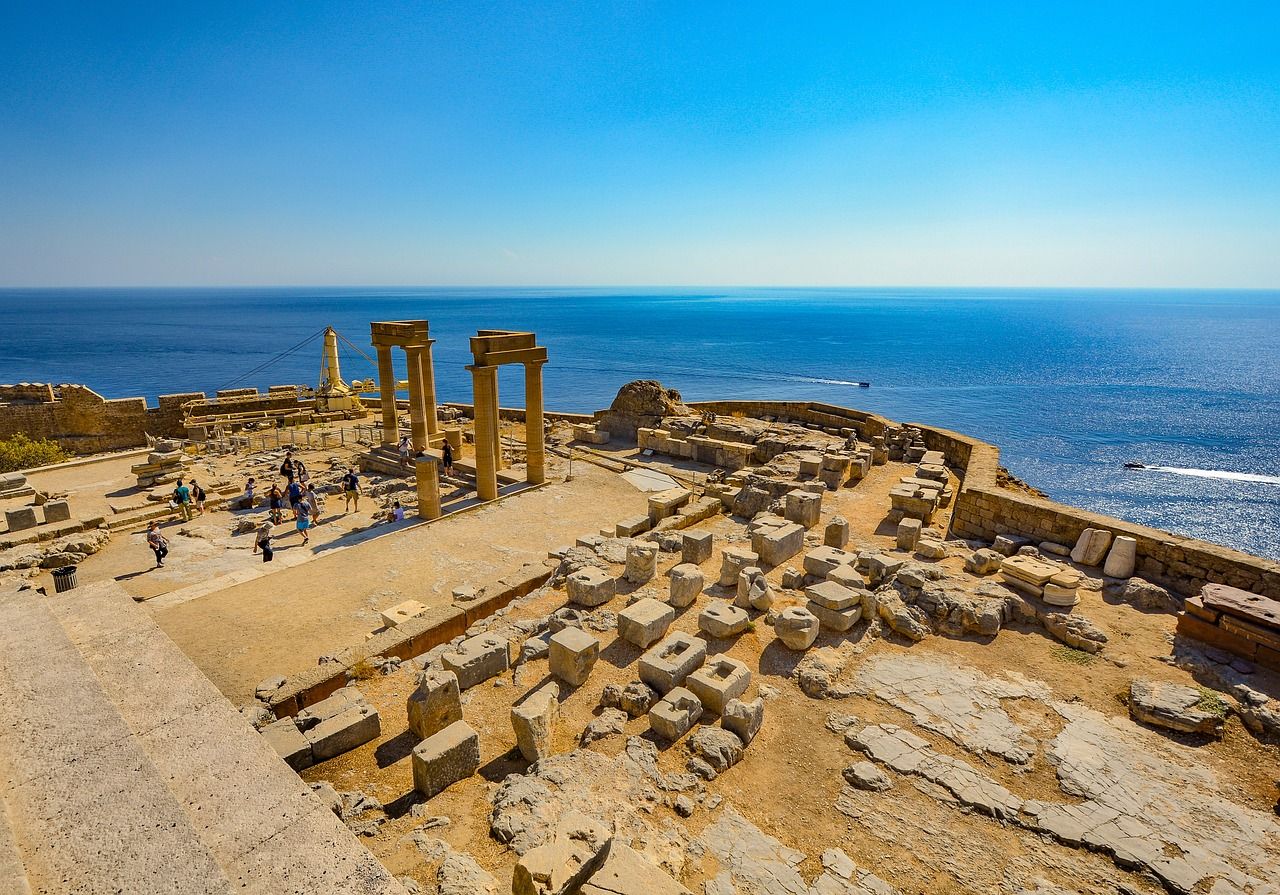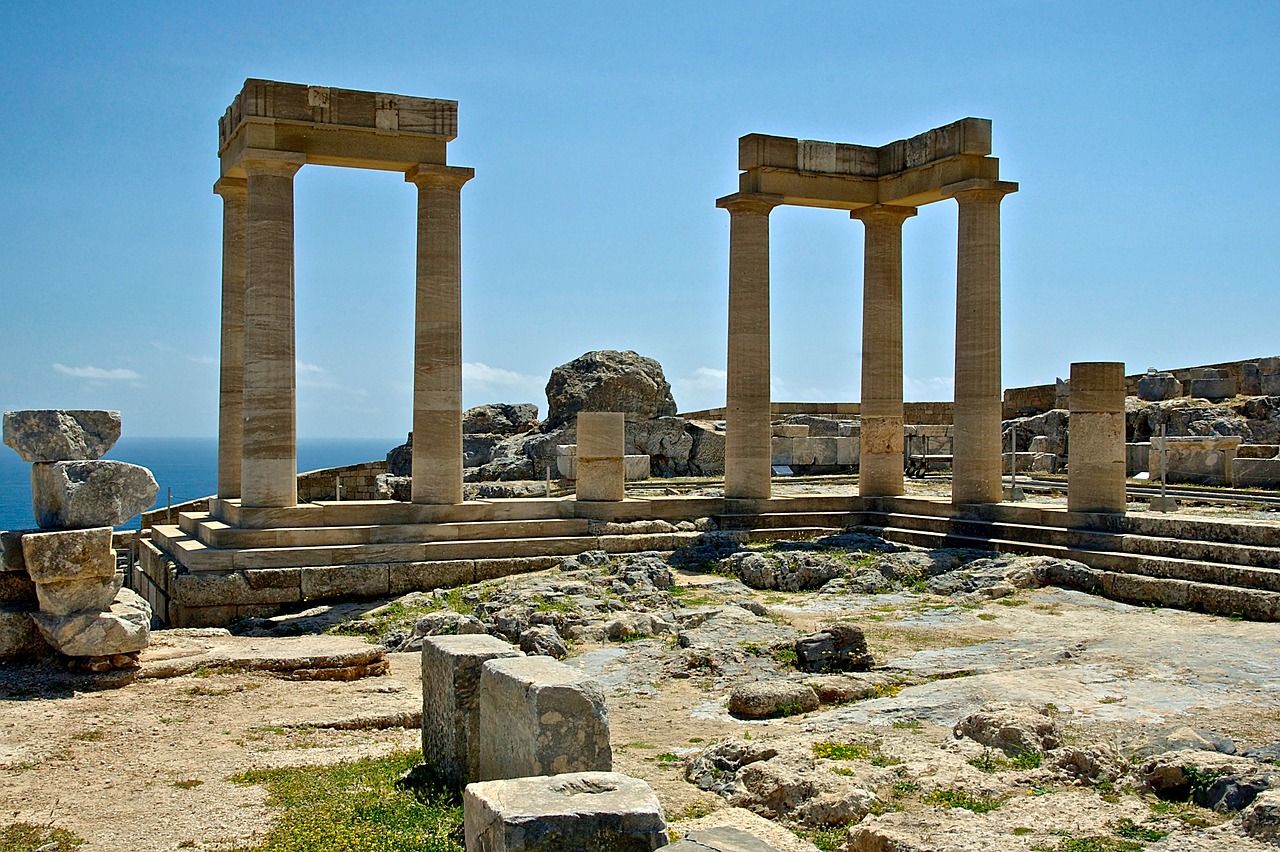Mount Olympus, Meteora, Aegean Sea ancient monuments
Mt Olympus
Mount Olympus, in northeast Greece, has been known as the home of Zeus and the major Greek gods since before the time of Homer. The semi-legendary author of the Odyssey and the Iliad, who is thought to have lived between 800 and 1200 BCE, included this dramatic mountain in his stories of the gods and as the source of thunderbolts from Zeus.
It's no surprise that magical stories grew up around Mount Olympus. It rises almost straight from the Aegean Sea to a height of 2,917 meters (9,570 feet or nearly 2 miles) at its highest peak, making it the tallest mountain in Greece and the second tallest mountain in the Balkans. Its lower slopes are broken by narrow, densely forested gorges marked by waterfalls and caves where lesser gods and other spirits were said to live. Its peaks—and there are 52 separate peaks—are snow-capped for eight months of the year and often hidden in the clouds the rest of the time.
Hiking or Climbing Mount Olympus
Every year, thousands of visitors admire its fauna and flora, tour its slopes, and climb its peaks. Organized mountain refuges and various mountaineering and climbing routes are available. The usual starting point for climbing Olympus is the town of Litochoro, on the eastern foothills of the mountain, 100 km (62 mi) from Thessaloniki.
There are several easy walks to the trailheads and into some of the more scenic gorges. You can also drive part way up, to the National Park parking areas at the head of several trails. A full trek on to the Mount Olympus massif takes two to three days and involves staying overnight in one of the trail refuges as well as stamina, good balance and a head for heights. The trails vary in difficulty from III to VIII in international mountaineering standards.
Mythical things you can do on Mt Olympus
- Hike along the Enipeas Gorge
- Ascend the Throne of Zeus
- Go canyoning along the Orlias Gorge
- Head into the villages, where gods become locals
- Experience rock climbing like a god
You can discover more here https://www.discovergreece.com/travel-ideas/best-of/8-mythical-things-do-mt-olympus
Meteora
The extraordinary combination of the giant cliffs with the Greek Christian Orthodox Monasteries build on top of them is a must for everyone to see. The monasteries of Meteora are constructed on top of natural sandstone rock pillars and the most amazing is that these rock pillars emerge in the middle of a valley.
According to scientists, these pillars were formatted about 60 million years ago, during the Tertiary Period. Once the area was covered by the sea, but a series of earth movements caused the seabed to withdraw. The mountains left were continuously hit by strong winds and waves, which, in combination with extreme weather conditions, affected their shape. This is why the pillars are composed of sandstone and conglomerate.
Meteora is one the most spectacular places in the heart of Greece that everyone should visit. Don’t miss the chance to experience this geological phenomenon and admire the monastic communities, which are the great result of human ingenuity, faith and patience.
Today only six monasteries are active with a small number of monks or nuns who reside on Meteora. In 1988, the Meteora monasteries have been included in the UNESCO World Heritage List and the Meteora-Antichassia area is part of the Natura 2000 network hosting some rare species of birds and flowers. As you approach the town of Kalabaka, the nearest big town near Meteora , and the picturesque village of Kastraki you will see a complex of giant sandstone rock pillars that climb up into the sky. On top of them you will spot the famous Meteora monasteries.
Discover more here https://www.greeka.com/thessaly/meteora/geography/
Arrivals
Arrival airports
Participants are expected to arrive through the Athens International Airport Eleftherios Venizelos, or Thessaloniki International Airport Makedonia, or Nea Anchialos National Airport.
